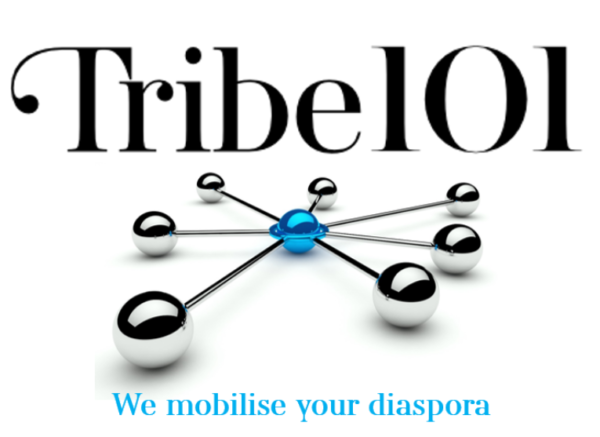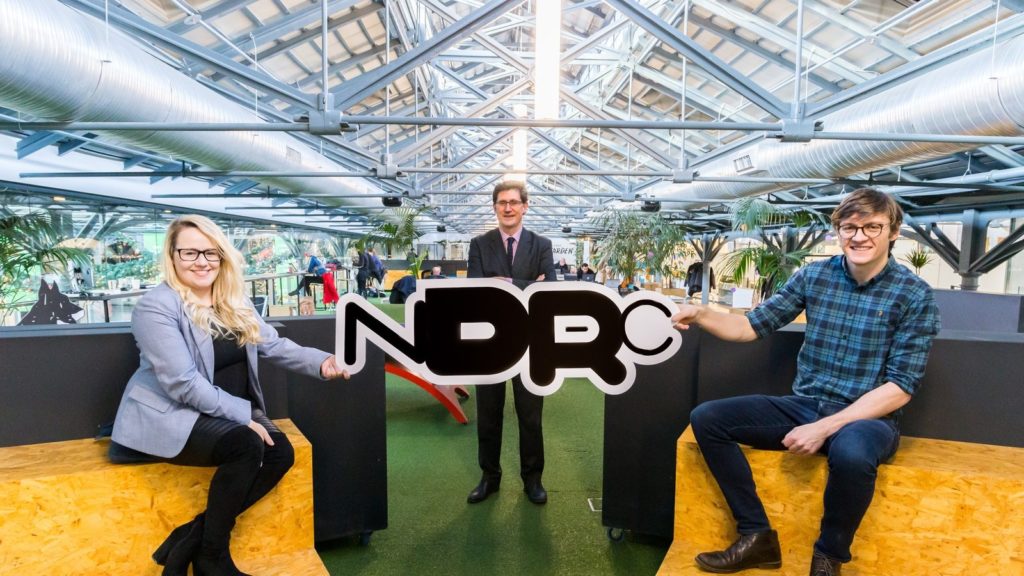
The importance of the Bid Library, comprising, prior responses tagged by industry and solution. Company information in an organised structure

The importance of the Bid Library, comprising, prior responses tagged by industry and solution. Company information in an organised structure

Our two expert procurement managers, Gavan and Eoin, have over 50 years’ of experience between them. Their views on tenders are consistent with many other buyers: tenders are becoming ever more crucial, early engagement with the client is increasingly important, and buyers are increasingly frustrated by the quality of proposals they receive. Early engagement allows you to understand what value you need to offer to the client in order to win the business. As Gavan says, ‘You are delivering true value in your tender when the client trusts that you will deliver greater benefit than your competitors and can clearly articulate what that benefit will be’. However, cutting costs and reducing your price is not always providing extra value. However, cutting costs has a finite impact, as you can’t cut costs forever. If a client has two equally good tenders under consideration, one of which drives revenue and one of which reduces cost, the one that drives revenue is usually the better decision. You tender should have a range of value touch-points, tailored towards the client and the evaluation team, and each evaluation team member, eg. End user, legal, financial, human resources, etc. Look at the award criteria, and what elements of value can be portrayed. Use proof points to embed the value within the tender document. At TenderTeam, we provide value through the benefits that come from helping you to develop better tenders more efficiently that win more business. We can help you create your value proposition, see www.tenderteam.ie

The quality of tenders is generally getting better and better. In a boom economy companies tend to spend more on their tenders, as there are more contracts available to win, as organisations as spending more money on capital and operational projects. Make hay while the sun shines. When an economy turns, tender competition is sometimes even tougher, as lucrative contracts become even more valuable to see out the recession and hopefully can lead to some years of stability. The difference is that some firms can still win in good and bad times by spending a lot less on their tender process, and being a lot more successful. We’ve seen these smart companies do very well. How do they do it? Our clients have used our TenderSmart methodology of tendering. This is a benchmark for how much you should be spending on your tenders, and how you can manage this with the best chance of success. We look at your ratio of tender specialists to salespeople, the amount of tenders you complete and win each year, what sector you are in and the growth of your sector and competitors in that sector. Then we look at your positioning, the quality of your tenders and what type of pipeline of opportunities you can expect. We then implement a TenderSmart programme, which is guaranteed to increase your success rate over the year. If it doesn’t – you get money back and we get a bad reference – and this has never happened to us in 10 years. To enquire about our TenderSmart programme, see www.tenderteam.ie

John Sisk & Sons (Sisk) have been awarded the €80m contract for the design and construction of the 10,000 sqm One Opera Square office building in Limerick. Works on the project commenced earlier this year and will be completed in January 2025. The project is Ireland’s largest-scale development site. The 3.7-acre site will be transformed into a daytime employment hub, as well as offering 450,000 square feet of accommodation to the people of Limerick. One Opera Square is going to be one of the landmark buildings in this emerging new Limerick city centre and will deliver huge economic benefits for the city and region, with a capacity for up to 1,000 employees.
Tender Team provided a range of tendering support and consultancy services throughout the tender process to Sisk in 2022.
‘The support we got from Tender Team was incredibly helpful and critical to us winning this contract”
Testimonial from Vincent McCarthy, Regional Director, Pre-Construction, Sisk
https://www.johnsiskandson.com/news/sisk-selected-to-develop-one-opera-square

You’ve all been there before. Having thrown your heart and soul into the creation of a tender, which you felt was an excellent document; confidently submitted on time, comprising your best efforts to achieve a compliant and responsive tender addressing all key elements required in the RFT.

SHEENA LOWEY
You painstakingly spend hours, days and sometimes weeks on questions that have no relevance to what you can do for them as they’ve clearly not thought enough about the questions they are asking or have made up their minds to just go through the motions of the tender process. You know you have the ability to deliver above and beyond the incumbent. The incumbent may have quoted lower than yourselves last time to secure the job, but doesn’t deliver as promised (surprise, surprise), so you expect a positive response this time round. You then wait….and wait and wait, feeling very deflated after all the initial effort due to the delay in hearing anything, positive or negative.
Following a few in vain attempts to find out the results, if you’re lucky a one-liner comes back saying ‘we are still in the review and evaluation process, please be patient. We apologise for this delay’, or, to your horror and dismay, an email may state that it has been awarded to another tenderer who priced lower; worse still, the incumbent who hadn’t delivered.
A word within the feedback, like “the successful tenderer demonstrated a clear understanding of the services required”, or that they ”provided enormous detail”, might indicate that they want the same suppliers they’ve had before. And then there is the usual one about “your tender didn’t demonstrate sufficient experience” or “your tender lacked required detail around…” without the necessary explanation you would have benefitted from reading, to assist you with your next tender. When your combined expertise is significantly more than the chosen tenderer, it typically means we don’t want to change, or take the risk.
The situation is even more annoying because, you took the plunge despite your worst fears. You were suspicious of the fact that the incumbent might win again, and they did, incredulous as it may seem.
Before commencing work on a tender response document, Competitive Intelligence can be an effective tool to aid you in this relentless and tiresome, not to mention time-consuming, quest. Ask yourself and colleagues questions such as:
If you discover the tender has been awarded to the usual suspects, it’s essential to get genuine and detailed feedback. This feedback must be sought too, in the event that you win the contract. The best analysis tool for this situation is win-loss analysis.
A win-lose analysis is a comprehensive, systematic and ongoing analysis.It looks at why your business won and lost deals. Win or lose – this process delivers powerful insight to transform the way you tender and influences the way in which you run your company, filtering through each department or staff member involved in the sales and business development process.
To unveil your potential client’s decision-making process! It helps you understand how the market sees you. What you are missing or why you are attracting certain clients and not others? Which competitors are winning against you? And most importantly, why? Cost is one aspect, but the way you work with people, an entirely different reason perhaps.
Also, to determine if you stand a chance of getting the contract next time. The Win-Loss analysis is a potent Intelligence tool. It allows you to see any trends and patterns before you tender again. Should you alter your approach or stick with the status quo. It provides valuable insight either way.
On accumulation of all feedback, you have answered questions like those above, it’s time to make note of lessons learned. 1) Write down all the reasons you will get the contract, 2) Note the reason why you won’t get the deal.
At this stage, you will be better informed as to whether it’s worth your while going for it next time, or you will have saved yourself a lot of time and energy:
What’s the organisation’s appetite for change?
What’s the awarding authority’s track record on awarding contracts? Do they usually go to the same providers? Find this out to avoid wasting your time.


Tender Team’s Eoin Lonergan is delighted to be a guest speaker at the upcoming Whitepaper conference ‘Awarding Public Contracts Skilfully and Lawfully within the Procurement Rules’ on 28th September 2022 in Dublin.
For tickets please visit: https://whitepaper.co.uk/conferences/procdub22
These will answer questions such as:
Awarding public contracts skilfully and lawfully within the procurement rules
How do you rescue the situation if the value of the contract reaches and exceeds the thresholds and you need to vary?
How do you incorporate carbon and climate metrics into tender documents, that ensure fairness and equity across bidders?
Where are the limits to transparency and full disclosure from the outset, including possible breaches of confidence and prejudicing retenders?
What mechanisms can mitigate the risk of rising costs and fluctuating prices, including energy and stakeholder concerns about going to market?
What are the differences, risks and advantages of the Competitive Flexible Procedure?
How do you decide if a tender is abnormally low, and what do you do if it is, supported by practical examples of borderline cases?
How do you control – and overcome – the problems with early contractor involvement, e.g. pre-market testing or specification writing, so you reap the benefits without conferring an advantage?

Gas Networks Ireland (GNI) is the business division of Ervia that owns, builds and maintains the natural gas network in Ireland and connects all customers to the gas network. GNI operates one of the most modern and safe gas networks in the world and ensures that over 700,000 homes and businesses receive a safe, efficient and secure supply of natural gas, 24 hours a day, 365 days a year. Fexco won the contract to provide Customer Care Centre services for GNI and Tender Team were delighted to assist Fexco in winning this valuable contract.


The company tendered to the Welsh Government’s International Relations & Trade Department for a project to engage the Welsh Diaspora around the world. The aim of the project was to make 500,000 diaspora connections over the term of the 3 year contract using digital communications methodologies.
Tender Team were contracted to provide support and consultancy to Tribe101 delivering a successful tender submission.

You can check out the TEDx talk from Tribes101’s, Stephen Treacy which is now ‘promoted’ onto the main TED platform here:
https://www.ted.com/talks/stephen_treacy_the_art_of_diaspora_whispering

Following a public competition, Dogpatch Labs was awarded a €17m, 5-year contract to run the National Digital Research Centre (NDRC), this was their biggest single contract secured to date. This contract was awarded following a Competitive Dialogue process that took place over 12 months and involved the coordination of multiple parties, meetings and formal presentations of documents as well as a series of commercial negotiations. Comment from Patrick Walsh, CEO, Dogpatch Labs. “Eoin Lonergan was our retained tendering advisor here throughout and he was invaluable in supporting us successfully navigate the complexities and challenges of the Competitive Dialogue process. I greatly appreciated the depth of his domain expertise, his skill in coaching us and also his willingness to be flexible and available at all times. I would highly recommend Eoin.”

Despite the turmoil and unpredictability caused by COVID-19, sustainable procurement is increasingly on the agenda for buyers, consumers, employees, and investors, who are demanding that businesses take positive and demonstrable steps to reduce their negative environmental impact. It is incumbent on all organisations to stimulate the provision of more resource-efficient, less polluting goods, services and works within the marketplace.
Green Procurement – what is it exactly?
Green Public Procurement (GPP) is a process where public authorities seek to source goods, services or works with a reduced environmental impact. The Government of Ireland’s annual public sector purchasing accounts for 10% to 12% of Ireland’s GDP, a large part of economic activity and demand.
The Pressure Is On
Business and social pressure can be immense, with many organisations swamped by the swathes of information as to how to start the sustainable process and what is reasonably expected of them. Choosing the right KPIs allows your organisation to deliver quantifiable, solid and calculable results to gauge your carbon footprint reduction and to suit your firm size. It goes back to the issue of tangible return on investment – results must be measurable in order to sustain interest and leadership in the plan, and to achieve buy-in across the organisation as a whole. A shift in attitude such that carbon reduction becomes inherent in the lifeblood of an organisation’s ethos must occur to make a real difference in what we now face in the years to come.
Which KPIs to Choose?
Choosing the right KPIs allows businesses to identify their minimum starting points and areas that can be improved immediately, such as premises and/or working from home, changing to sustainable energy alternatives and usage, waste disposal, LED lighting, staff travel plans, roof garden bee-keeping, growing more plants and creating micro vegetable gardens, but also to communicate impacts and trade-offs of procurement decisions.
It can be tricky finding the balance between cost effectiveness and sustainable development. We need to be sure that what is purchased has minimal harmful effects on the environment and society. Sourcing sustainable alternatives is a starting point. Where items are essential to the business, changing and monitoring demand can involve reducing the number of deliveries required, perhaps opting to take a bigger delivery once a week rather than multiple smaller ones.
Delegating Leadership
Addressing carbon footprint reduction might seem like extra workload in already pressurised working environments, with smaller organisations finding it a challenge to properly resource. By empowering environmentally conscious staff members and adding this CSR focused string to their career bows, this can diminish the burden and tick the essential climate action box. Positive reinforcement and rewarding can be achieved within the remit of staff reviews and appraisals. If they feel there’s financial and emotional/conscience-reward, they’ll surely deliver!
What organisations of all sizes frankly require to reduce their carbon footprint is an innovative and collaborative approach, working with suppliers and even competitors to assist in the bigger picture. From experience in advising clients on construction and related tenders, organisations are starting to select subcontractors and suppliers with whom they are aligned in reducing their carbon footprint, thereby setting agreed expectations from the outset.
In the banking sector, organisations are merging to create a central service to collect and distribute important paperwork from high street branches, removing the need for each bank to run their own journeys – creating both environmental and cost savings for all parties. The tenderer’s remit here is to drive the agenda and present potential solutions, which can then be discussed with team members at all levels of the business.
The biggest challenge is often trying to view things differently. Many in tendering and procurement will not have tackled such issues before and there’s no simple guide to assist with key steps on how to become more innovative overnight. It’s a matter of taking small steps each day, and building a sustainable strategy over a 5 year period, which should be reviewed year on year, and amended according to the business trajectory and environmental circumstances as they evolve.
The opportunity for procurement is significant. CEOs are keen to move businesses in this direction, and those in operations will welcome suggestions around specific measures that can be implemented relatively easily. Procurement stands at the heart of how a modern business can go about tackling what is arguably the single biggest issue of our time.
There are organisations specialising in assisting companies with Sustainability Opportunity Assessment (OA) which seeks to identify, deliver and sustain a sustainability strategy driven by your priorities around social, environmental and cost, risk and revenue impacts. The outcomes are then aligned to your organisation and its sustainability objectives and typically include some or all of the following:
a) Pollution Prevention: Modify your production processes to emit less waste or emissions:
b) Resource Conservation: Resource conservation refers to the practice of using resources such as water, energy, and raw materials efficiently and ethically.
Bosh: According to the Bosh website, they have a goal to reduce waste and water consumption by 2% every year.
Graphics Packaging: Graphics Packaging has a goal to reduce greenhouse gas emissions, reduce the use of non-renewable energy, reduce water effluent at mills, and increase recovery of paper and paperboard by 2020.
c) Zero Emissions
Reducing your carbon footprint, greenhouse gases, toxic gases, carcinogenic particulate matter is to reduce your carbon dioxide emissions, which contribute to global warming:
d) Waste Minimization / Waste Reduction: Waste reduction is the method used to achieve zero waste. You can start with a goal of waste reduction or waste minimization. How? identify and limit sources of waste, promoting recycling or aftermarket and avoiding landfill, enabling circular economy. Switch to a laundering service for your shop towels, mops, gloves, oil absorbents, and filter bags.
e) Diversity: Promote the inclusion of ethnic minorities, gender balance and orientation through your supply chain.
f) Supplier accountability and continuous improvement reporting on raw material sources and their own sustainability practices.
ISO 5001:2018, ISO 50001 supports organisations to use energy more efficiently, through the development of an energy management system.
ISO 14001, ISO 14001:2015 specifies the requirements for an environmental management system that an organization can use to improve environmental performance. ISO 14001:2015 helps companies manage environmental responsibilities in a well-defined, systematic approach.
In Summary – Your sustainable strategy must hit some key points:
The integration of green public procurement principles into the economy through each business’s collective effort will further enhance Ireland’s reputation as an innovative, eco-efficient and forward-looking place to do business.
When Tendering – Facts regarding GPP under 2014 EU Procurement Directives
Sheena Lowey, Director of Operations
Tender Team Ltd.
slowey@tenderteam.ie
087 3858793